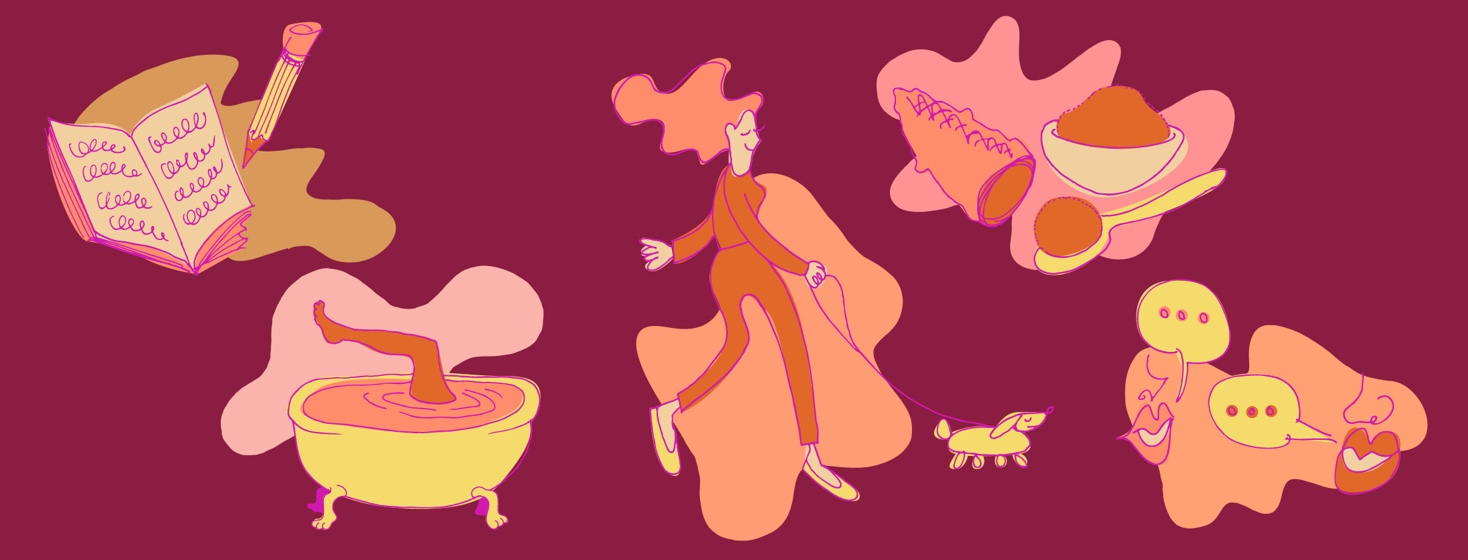Coping With Restless Legs Syndrome
Restless legs syndrome (RLS) affects somewhere between 5 to 15 percent of adult Americans. That’s around 25 million people experiencing symptoms at any one time. Quite possibly more. So, there are a lot of us out there learning how to manage our day-to-day lives with twitchy legs.1
Some people experience RLS for a short period of time — during pregnancy, with medication reactions, or food intolerances. But a lot of us have ongoing, daily, and sometimes debilitating symptoms. I am one of those people and I want to share with you the ways in which I’ve learned to cope with — and manage — restless legs syndrome.
Every little thing helps
Lifestyle changes are the first, most obvious, and easiest way of managing symptoms. It often doesn’t make symptoms go away altogether, but in my experience, every little thing that helps delay or reduce the severity is worth its weight in gold.
This includes adjusting diet by removing alcohol, caffeine, nicotine, highly processed and high sugar products — all these things can stimulate the nervous system and increase RLS symptoms. When I first was diagnosed I eliminated alcohol and caffeine altogether. I find that I can now manage small quantities but it took many years. I remain cautious with processed and sugary foods.
Stretching and regular exercise help reduce my RLS symptoms
When RLS starts to hit, stretches make a big difference to me. They don’t seem to prevent the onset of symptoms but they can definitely reduce the discomfort for a period of time. Stretching is a particularly useful tool when I’m forced to be in a confined space like a theatre or airline seat. I can subtly stretch for as long as possible before having to stand up and wander around for a short period of time.
Regular exercise helps me reduce symptoms. I notice a distinct difference between sedentary and active days. I don’t need to run a marathon, I just need to make sure I’m not sitting down too often. I have a standing desk for working. I do laps around my house every 15 minutes or so. I work out 2-3 times per week. And when I’m being smart, I try and do a big walk once or twice a week. I gotta confess — I haven’t been smart for a little while and I notice the difference.
Temperature regulation, baths, and distractions
Temperature also makes a difference, particularly when I’m in bed. If I’m too hot I get very restless, so I try and maintain a cool room and have plenty of bedding options so that I can keep my legs cool but my body warm.
Conversely, before bed, I find that a hot bath can really help as it offers muscle relaxation, particularly if I dose the bath with magnesium salts. When I have a bad flare-up, a hot bath followed by a cold shower is really, really good. The muscle-relaxing properties followed by the cool and calming effects of the shower provide longer-lasting relief.
When RLS does hit I need distractions — an engaging book, a conversation with friends, binge-watching television, games on my phone. They don't necessarily stop the symptoms, but distractions take away the focus and somehow make it more manageable.
The balancing act: magnesium supplements, iron levels, and drug interactions
Supplements have helped to some degree, and for years that was enough to manage my symptoms. Magnesium is a commonly recommended supplement for RLS, and it certainly does make a difference — it is known for its muscle-relaxing properties. I also have to manage my iron levels, as I have had very bad flare-ups when I was anaemic. People with RLS often have difficulty maintaining iron stores. These days I manage my iron through diet, but for a long time, I needed iron infusions to maintain adequate levels.
Investigating the impact of other medications can also be very important, as some drugs and supplements are known to exacerbate RLS symptoms — particularly antihistamines, psychiatric medications, and melatonin. It is a balancing act that needs to be discussed with your medical professionals, as sometimes taking the medication is essential and the RLS is something that needs to be managed. It is also worth considering the timing of medication so that it has a lesser impact on sleep.
Finding the right medication regimen for me
Finally, pharmaceutical support has changed my life. Up until I was about 40 or so I managed with lifestyle modifications and natural supplements, but like so many things in life, symptoms deteriorated with age and eventually I needed more strategies. I investigated the impact of my other medications and changed or modified those I could. I then started with pramipexole, but after issues with augmentation, I moved to pregabalin. I now take both pramipexole and pregabalin at very low doses and I find they work extremely well.
Every RLS coping journey is unique
I have had plenty of practice with RLS, and these strategies have been learned and collected over 20 years. There are all sorts of curious remedies that work for different people and some of the things that work for me don’t help others at all. We all have a very unique journey and finding the tools that help you is an important part of managing symptoms.

Join the conversation